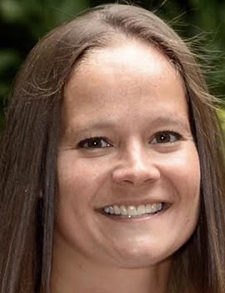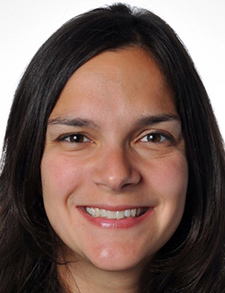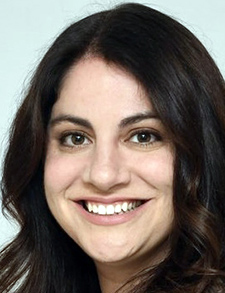
Shutterstock.com
As the hospital at home concept and care model gets more attention nationally, hospitalists often provide the leadership, clinical expertise, and labor needed to get these programs off the ground. Although the model’s regulatory and reimbursement foundations remain uncertain, and many established programs remain small, two decades of positive outcomes—demonstrating improved safety, shorter lengths of stay, reduced readmissions, lower costs and mortality rates, and, especially, higher patient satisfaction—would seem to demand finding a way to make it work.
“Given the clinical outcomes and patient experience metrics we see, I don’t see how we could do anything but choose a path to bring more high-acuity care to the home,” said Patrick Kneeland, MD, vice president of medical affairs for Denver-based DispatchHealth. “It’s something we in the hospitalist community need to figure out how to do and how to advocate for.”

Dr. Kneeland
Dr. Kneeland’s company was created to provide medical care at home as an alternative to hospitalization, along with other alternate-site medical services, for contracting hospitals, health systems, and payers. It operates in about 40 cities nationwide. As the larger system grows more serious about patient-centered and value-based care models, home-based care provides a lens to understand patients and meet them where they are, treating their social context and social determinants of health in different ways.
“I really believe in this model. This is high acuity care in the home, fully substituting for hospital care,” Dr. Kneeland said. And for the right patient population, it’s better care.
What is hospital at home?
The basic concept of hospital at home is to provide hospital-level, acute medical care to patients with acute medical needs, but to do so in their residences, with needed services—such as clinicians, nurses, medical equipment, radiology, labs, oxygen, pharmacy—delivered, in person or virtually, directly to the patient’s home.
Patients have to be pretty sick to qualify for hospital at home, although the most complex, comorbid, clinically unstable hospital patients may not be the best candidates to receive care at home, given potential complications. The goal is to manage the patient’s care within the same approximate length of stay as in the hospital, using portable versions of the treatments and diagnostics employed in the hospital, while offering an equivalent level of care.
Although it has a longer history and greater acceptance in Australia, Canada, the United Kingdom, and other countries with single-payer systems, the concept’s introduction in this country dates back to the 1990s. A pilot project to test the model at John Hopkins Medicine in Baltimore, led by geriatrician Bruce Leff, MD, demonstrated feasibility, safety, patient satisfaction, and cost-effectiveness.1 A larger-scale follow-up study from 2005 documented reduced lengths of stay, lower rates of complications, higher satisfaction, and significant cost savings.2 Subsequent research continues to show positive outcomes for hospital at home programs.
Variations on the model
DispatchHealth provides high-acuity care by sending a hospitalist physician or advanced practitioner daily to the homes of patients on service, while nurses make two patient home visits per day, often in conjunction with the hospitalist’s visit, Dr. Kneeland said. Clinicians are also available for phone or virtual contacts, and a command center offers 24-hour virtual access to nurses.
Another key component of this model is its “rover”—a car equipped with about three-quarters of the medical technology found in an average emergency department, including ultrasound, X-rays, EKGs, and timely lab testing. The rover also brings the clinician to the patient’s home.
In building its program, DispatchHealth has developed services both in-house and in partnership with community providers. “Our goal is to bring high-quality acute care into the homes of as many patients as we can,” Dr. Kneeland said. National and regional contracts with large payers are also being pursued using value-based payment models.

Dr. Murphy
By contrast, the hospital at home program at Atrium Health, a hospital system based in Charlotte, N.C., uses community paramedics to do most of the in-person visits while hospitalists see the patients virtually, says its medical director, hospitalist Stephanie Murphy, DO. Community paramedics are an evolving health care model where certified paramedics receive supplemental training and skills to provide protocolized care in non-emergent settings.
“Because we’ve tied our program to our paramedics, they function more like nurses, but at a lower cost. Our virtual hospitalists deliver care to patients and round on them every day—just like in the hospital facility—and then discharge patients back to their primary care provider or the next care setting.”
The program’s hospitalists typically work from 7 a.m. to 7 p.m., seven days on and seven days off, like other hospitalists. Two rounders and one admitter are scheduled every day, for a caseload of 20 to 25 patients. Dr. Murphy said her target census is 30 patients, and her program already is one of the country’s largest.

Dr. Timpe
HealthPartners, Bloomington, Minn., established its Home-Based Acute Care program in 2019—just ahead of the COVID-19 pandemic. It’s a partnership between community paramedics and on-call hospitalists, who are available to do joint telemedicine visits in real time when the paramedic is present in the patient’s home. In-person physician visits are made when necessary, said the program’s director, Chrisanne K. Timpe, MD, who is also a practicing hospitalist at Regions Hospital in St. Paul, Minn.
“We are now investing in a remote patient-monitoring system that will help us rapidly expand our census,” she said. “I believe that with telemedicine we’ll be able to leverage a lot more so hospitalists can more fully utilize their medical decision-making abilities.”

Dr. Mecca
The Mount Sinai hospital at home program in New York City admits patients from five hospitals in the Mount Sinai health system, said its program director, hospitalist Joanna Mecca, MD. Given its broad geographical coverage area, most of its provider visits are virtual, but these can be performed in person if needed. Mount Sinai has been experimenting with the model since 2014 when the Icahn School of Medicine at Mount Sinai received a $9.6 million grant from the Centers for Medicare and Medicaid Services (CMS) to establish its Mobile Acute Care Team.3 The three-year CMS Health Care Innovation Award enabled Mount Sinai physicians in its Visiting Doctors Program to conduct more than 6,000 visits to patients in Manhattan.3
The program also partners with Contessa Health and provides admitted patients with a tablet computer and equipment like a Bluetooth stethoscope. A phlebotomist provides home visits seven days a week. Mount Sinai has a pool of nurses who specifically work with the hospital at home program, allowing familiarity with the program and providing acute-level care in the home. Common admitting diagnoses include pneumonia, urinary tract infections, cellulitis, asthma, chronic obstructive pulmonary disease, and heart failure.
Getting a program off the ground
Hospital at home programs require a lot of groundwork, with a sharp learning curve to develop the essential clinical and logistical expertise. It can take a year or more of development before seeing patients. An important first step in launching hospital at home, said Dr. Murphy, is to get buy-in and engagement from senior hospital leadership. “Make it a collaborative conversation.” Look at areas of need within the facility. Does it struggle with capacity, not enough nurses, or poor patient satisfaction?
Also important is close alignment with the hospital’s compliance and legal departments, so they are comfortable with the program. How it works and which patients are being targeted should also be communicated to hospitalists, emergency department staff, primary care physicians, and other potential referrers.
Choose the right patients to admit. Appropriate patients are acutely ill and in need of many of the monitoring and treatment techniques of an acute hospital. But those patients who are the most complex medically and frequent users of health care resources may be harder to manage at home. The program needs protocols defining the patients it plans to enroll. Experience—what worked well or didn’t—can help to refine these protocols. Reviewing cases and identifying gaps in service might guide future admissions.
The patient should also be on board with a hospital at home referral. “You need patient buy-in in a whole different way,” said Dr. Timpe. “Some patients prefer being at the hospital. If you find yourself trying to talk the patient into the program, walk away. The patient has to believe in it.”
Engage the right clinical staff. “Find doctors who are committed to patient-centered care, not just as a platitude, and for whom providing care to patients in their own homes is exciting and energizing,” Dr. Kneeland said. The skill set includes clinical skills in managing common acute conditions, working with portable technology, handling nuances of decision making, and comfort with improvising in response to changing conditions on the ground.
Manage the supply chain. Find partners in the community who have worked out the logistics of the various services and technologies, including medication delivery or timely processing of blood gases, troponins, and other lab results. Know your community resources and who you can partner with, Dr. Timpe said. “Don’t reinvent work that’s already being done.” How will you offer respiratory, physical, and occupational therapy? How will the service interface with the hospital’s electronic health record?
Regulatory uncertainties
Although hospital at home has been studied for more than two decades, with growing interest by some private health plans, before the COVID-19 Pandemic, Medicare regulations requiring a minimum threshold of 24-hour nursing staff on-site in acute settings precluded Medicare coverage for hospital at home. In March of 2020, CMS issued a national public health emergency declaration in response to the challenges of COVID-19, announcing Hospitals Without Walls and a broad array of other regulatory flexibilities.4
In November of that year, the government announced, as part of a larger plan to enhance hospital capacity amid COVID-19 surges, a waiver program to permit Acute Hospital at Home programs to bill Medicare for a list of 60 acute diagnoses.5
At least 140 waivers have been granted to individual hospitals that have appropriate screening protocols and that assess both medical and non-medical factors for patients, who can be admitted from either the emergency department or an inpatient hospital bed. Daily visits by clinicians and twice-daily visits by nurses or other professionals are required. Diagnostic-related groupings and payment bundles are paid the same for acute care whether in a facility or at home. What’s not known is whether the emergency waiver—and thus access to Medicare/Medicaid coverage for this service—will end when COVID-19 emergency provisions are withdrawn.

Dr. Palabindala
Some, but not all, private health payers have also shown interest in hospital at home, especially for Medicare Advantage populations under value-based payment models. One of these is Optum Care, said Raman Palabindala, MD, FACP, MBA, SFHM, its Pacific Northwest regional medical director. Dr. Palabindala told The Hospitalist that in his current role he facilitates collaborations with companies like DispatchHealth, Contessa Health, and Medically Home as vendors for delivering hospital services at home to health network patients at a lower cost.
“We as payers want to work with experienced players,” he explained. “We wonder why individual hospitals would choose to devote the resources to building a hospital at home program that might only serve a small number of patients,” instead of partnering with those that have more experience in developing these programs, he said. “Are hospitals the right people to do it? I’m not sure it makes sense unless it’s a big system.”
National third-party vendors are building partnerships with hospitals and have developed supply chains and mastered how to manage the service, Dr. Palabindala said. “This is where the payer’s expertise comes in. Like it or not, payers drive health care strategy. Health systems and hospitals need to look at the big picture, and to be aware of payer dynamics and the mindset of value-based purchasing.”
A natural fit
But for individual hospitalists, their skill set will continue to make them a natural fit for staffing hospital at home programs—once they learn to appreciate the differences in providing care in the patient’s home.
“I’ve been blown away by how impactful it can be to enter someone’s home, and the shift in power dynamics,” Dr. Kneeland said. “We learn things about their social context, their lifestyle, their preferences. It’s a different way of thinking about interdisciplinary care and effective communication. You need to reconcile your evidence-based care plan with the realities of the patient’s life. Talking about their goals of care is on a whole different footing,” he said.
“What we’ve seen in the last two years—with hospitals bursting at the seams—is a glimpse of the future,” Dr. Timpe said. “I believe in the role of the medical provider in the home. It has probably made me a better hospitalist. Now, when I’m in the hospital, I see my patients in a different way because of what I’ve seen in patients’ homes.”
Next month: See part two of our series on hospital at home, focusing on the hospitalist’s role in this new model.
Larry Beresford is a freelance medical journalist based in Oakland, Calif., a specialist in hospice and palliative care, and a long-time contributor to The Hospitalist.
References
- Leff B, Burton L, Guido S, et al. Home hospital program: a pilot study. Am Geriatr Soc. 1999;47:697–702.
- Leff B, Burton L, Mader SL, et al. Hospital at home: feasibility and outcomes of a program to provide hospital-level care at home for acutely ill older patients. Ann Intern Med. 2005; 143(11):798-808.
- New Program to Provide Hospital-Level Care at Home. Mount Sinai website. Available at: https://health.mountsinai.org/blog/mobile-acute-care-team-mact-provides-hospital-level-care-at-home/#:~:text=The%20federal%20Centers%20for%20Medicare%20and%20Medicaid%20Services,in%20the%20hospital%2C%20but%20in%20their%20home%20environment. Published June 27, 2014. Accessed July 1, 2022.
- Fact Sheet: Additional Background:Sweeping Regulatory Changes to Help U.S. Healthcare System Address COVID-19 Patient Surge. CMS website. Available at: https://www.cms.gov/newsroom/fact-sheets/additional-backgroundsweeping-regulatory-changes-help-us-healthcare-system-address-covid-19-patient. Published March 30, 2020. Accessed July 1, 2022.
- Press release: CMS Announces Comprehensive Strategy to Enhance Hospital Capacity Amid COVID-19 Surge. CMS website. Available at: https://www.cms.gov/newsroom/press-releases/cms-announces-comprehensive-strategy-enhance-hospital-capacity-amid-covid-19-surge. Published November 25, 2020. Accessed July 1, 2022.